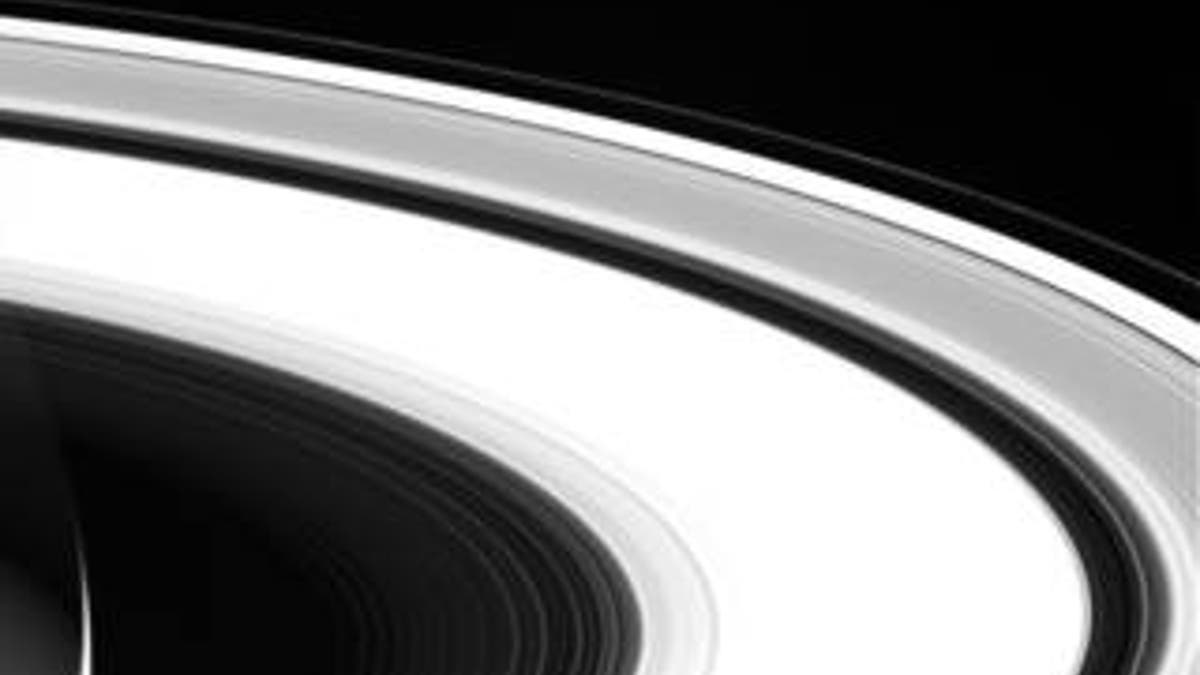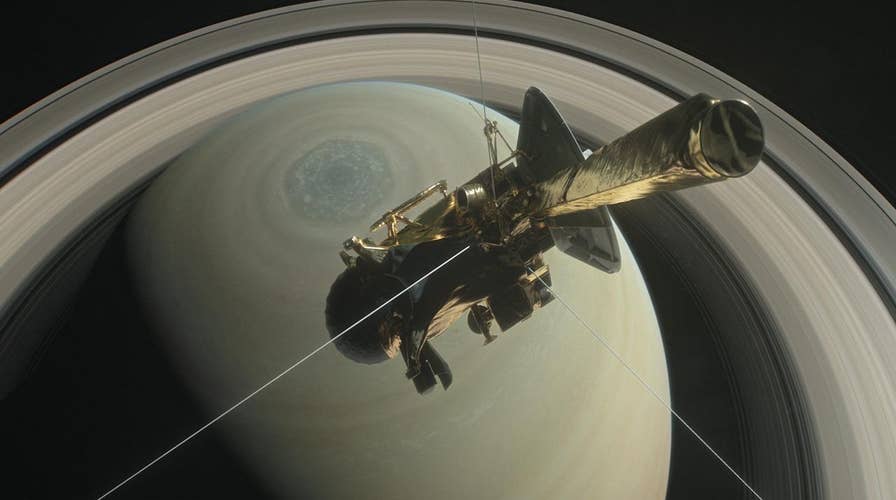NASA’s Cassini spacecraft crashed into Saturn
After a 20-year voyage orbiting Saturn’s rings, NASA’s Cassini spacecraft made its grand finale and crashed into Saturn after running out of fuel.
NASA’s Cassini spacecraft is set to make its ‘death plunge’ into Saturn’s atmosphere early Friday, ending an epic space journey that has lasted almost 20 years.
With Cassini low on fuel, scientists are opting to destroy the spacecraft rather than leaving the probe to drift around space.
NASA will lose contact with Cassini at 7:55 a.m. EDT, approximately one minute after it enters the planet’s atmosphere at an altitude of about 1,190 miles. During its dive into Saturn’s atmosphere, Cassini will be travelling at about 70,000 mph.
NASA'S CASSINI PROBE FINDS 'BIG EMPTY' ON DARING SATURN RING DIVE
Cassini will likely be about 930 miles above Saturn’s cloud tops when the signal is lost, according to NASA. “From that point, the spacecraft will begin to burn up like a meteor,” explained NASA, in a statement released Thursday. “Within about 30 seconds following loss of signal, the spacecraft will begin to come apart; within a couple of minutes, all remnants of the spacecraft are expected to be completely consumed in the atmosphere of Saturn.”
Scientists have been busy getting final data from Cassini. “The spacecraft is in the process of emptying its onboard solid-state recorder of all science data, prior to reconfiguring for a near-real-time data relay during the final plunge,” explained NASA, in its statement released late Thursday.
THE FINAL COUNTDOWN HAS BEGUN FOR NASA'S CASSINI
NASA has released some of the final images taken by Cassini.

Cassini has made a total of 22 dives between Saturn and its rings as part of the orbiter's so-called "Grand Finale," which began May 2.
The spacecraft, which has spent 13 years exploring the Saturn system, has generated a trove of scientific data on Saturn and its moons. Earlier this year, for example, NASA announced that Saturn’s moon Enceladus could support life thanks to the discovery of hydrogen.
The Cassini mission began on Oct. 15 1997 when the spacecraft launched from Cape Canaveral Air Force Station aboard a Titan IVB/Centaur rocket. Cassini arrived at Saturn in 2004.NASA is partnering with the European Space Agency (ESA) and the Italian Space Agency on the Cassini-Huygens mission. The Jet Propulsion Laboratory (JPL), a division of Caltech, manages the mission for NASA’s Science Mission Directorate.
Follow James Rogers on Twitter @jamesjrogers

